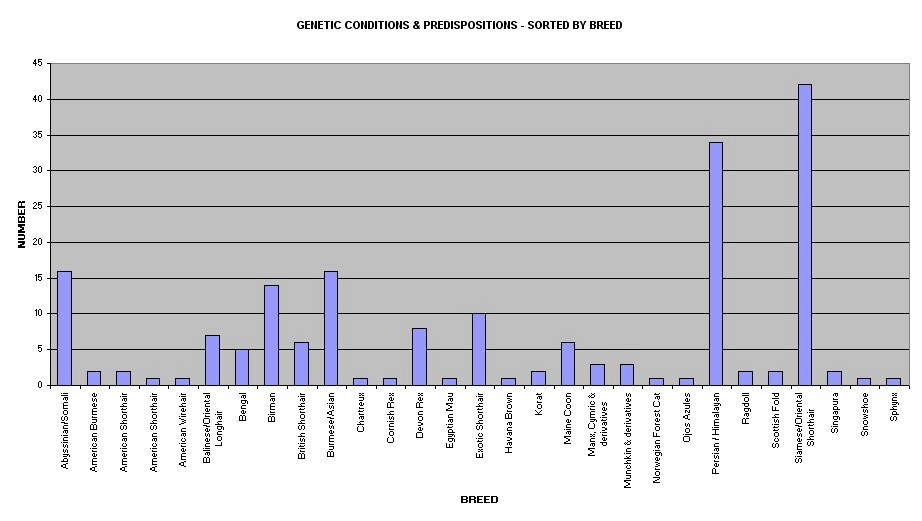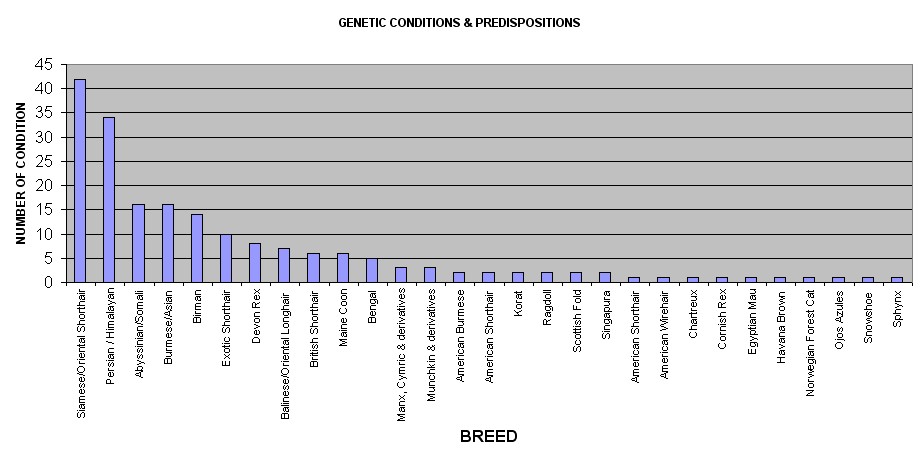
GENETIC ANOMALIES OF CATS - GRAPHS
2013, Sarah Hartwell
Using data from the conditions (as at 2013) I created graphs of breeds known to have one or more genetic issues. I grouped closely related breeds together as they share many of the same genes and many registries allow them to be outcrossed to each other. A lot of breeds donít appear on the graph because there isnít enough data collected. Some breeds are too young to have generated any statistics.
Graph 1: Breeds In Alphabetical Order.

Graph 2: Breeds in Descending Order of Reported Genetic Issues

At the top of the list:
1. The Siamese (including the Oriental Shorthair) had 42 genetic conditions or predispositions noted.
2. The Persian (including the Colourpoint Persian/Himalayan) had 34 genetic conditions or predispositions noted.
Both of these have been bred for extremes of conformation, albeit in opposite directions. The Siamese has been bred for extremes of slenderness , large ears and elongated nose. It owes much of this extreme look to a cat called Wankee who appears in most pedigrees many generations back. The Persian has been selectively bred for extreme cobbiness and a nose so short as to be almost flat to the face.
Third on the list is the Abyssinian (including its longhaired version, the Somali) with 16 noted conditions or predispositions. The Abyssinian group has only half of the conditions noted in the Siamese group. This reflects the genetic issues that can result when breeding cats for extreme conformation and the fact that early Abyssinians were bred with ticked British cats which would have expanded the gene pool.
Itís very important to note that these breeds also have plenty of healthy individuals. The statistics reflect the breed as a whole and not the health of any single individual. Many genetic conditions can now be detected using genetic screening so that gene carriers arenít used for breeding.